A is for Alphabetised wargame and sim news. Now and again, assuming I can persuade Austerity’s Blackburn Cirrus Bombardier engine to perform the miracle of internal combustion, I spend a few days scouring Simulatia and Grognardia for stories with the potential to fascinate, startle, cheer, dismay or amuse. Those stories are then dehydrated, alphabetised and delivered, via articles like this one, to people who’ve got better things to do than plough through puff and platitudes.
B is for Big wheel, big RRP
Having realised that dinky race sim wheels aren’t ideal proxies for the sizeable spoked steering devices used by real-life truck and bus helmsmen, Aerosoft has developed a new three-component peripheral with a 40cm diameter, 1080 degree rotation wheel at its heart. Deliveries of the 380€ controller set are due to begin in July.
C is for Close Combats on Steam
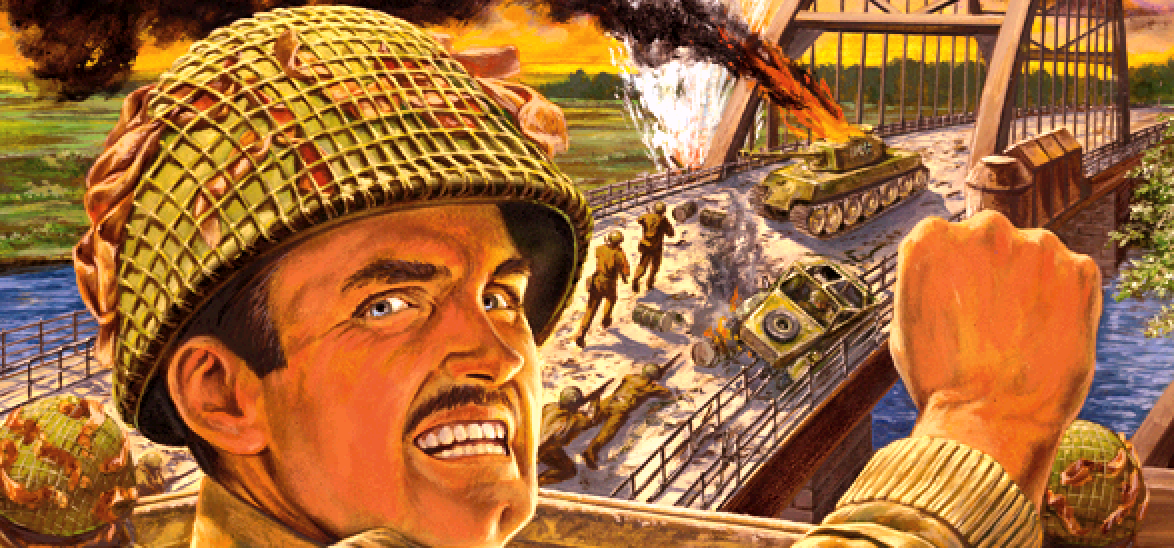
Available through GOG for donkey’s years, the five original Close Combats finally showed up on Steam this week. Publisher SNEG doesn’t mention modernisation in their blurbs. However, I’ve just compared the Steam/SNEG version of CC2 with the Slitherine/GOG one and noticed some minor differences. For instance, the newcomer offers a third resolution option (1280 x 720) and CC2’s over-hasty screen-edge scrolling seems to have been toned down somewhat.
D is for Duke Nukem 3D sans laughs

Compared with his inspiration, Brutal John is a humourless clod. Fortunately, OldSchool Laws Interactive are much better at level, weapon, and foe design, than they are at witticism crafting. Anyone with fond memories of Build Engine hits such as Duke Nukem 3D, Shadow Warrior, and Blood is sure to get a big kick (Q key) out of BJ’s generous three-level demo.
E is for Extensive engagement options
Wargamers not averse to a spot of Paradoxian province management are plumping cushions and straightening antimacassars in readiness for the arrival of the imminent Field of Glory: Kingdoms. A fortnight away from release, FoGK, will, like its predecessor, offer empire builders several distinct methods for resolving ruckuses. The most elaborate of these methods will only be available to Field of Glory II: Medieval owners.
F is for Farm familiar fields
First-person tractor and combine driving will not be possible in the ‘coming soon’ Global Farmer. However, the opportunity to farm in familiar surroundings (GF will utilise Open Street Map data) is so very unusual, that lack of cab views may not matter much. I’ll be interested to see how Thera Bytes’ creation copes with Britain’s complicated rural terrain. Will my homeland’s ubiquitous hedgerows be faithfully reproduced I wonder, or will I have to turn to the editor in order to properly replicate higgledy-piggledy rural Wessex.
G is for Guest contributor
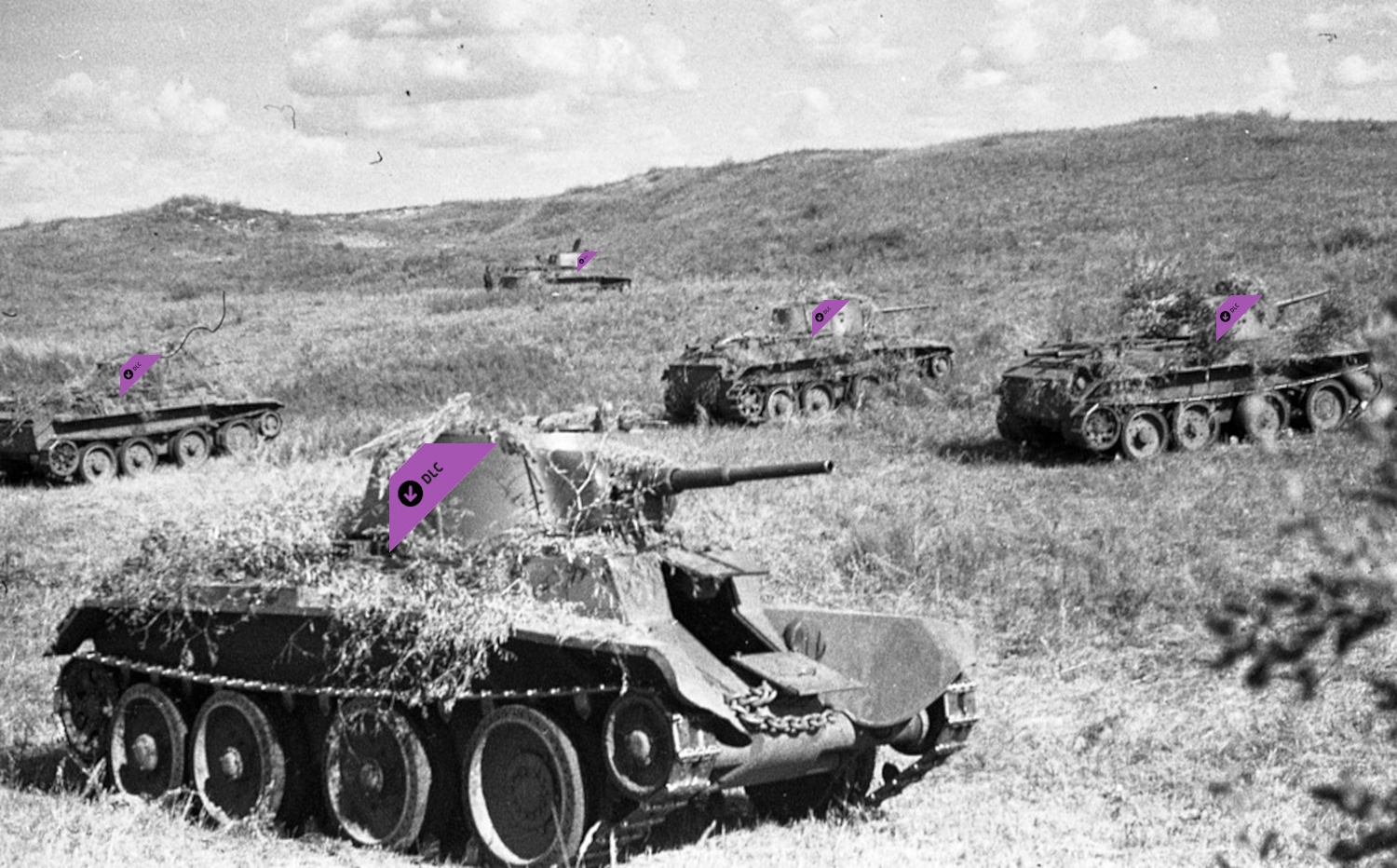
If your THC bookmark is https://tallyhocorner.com/tag/friday-feature/ rather than https://tallyhocorner.com/ you may not have noticed this recent article on Unity of Command add-ons by guest writer Martynas “JcDent” Klimas. Martynas hails from Lithuania, and assuming I can persuade him to write again for Tally-Ho Corner Minimum Wage (shits and giggles GBP) there’s a possibility he’ll follow his debut with a piece on the ludologisation of Lithuanian history.
H is for Hopping mad
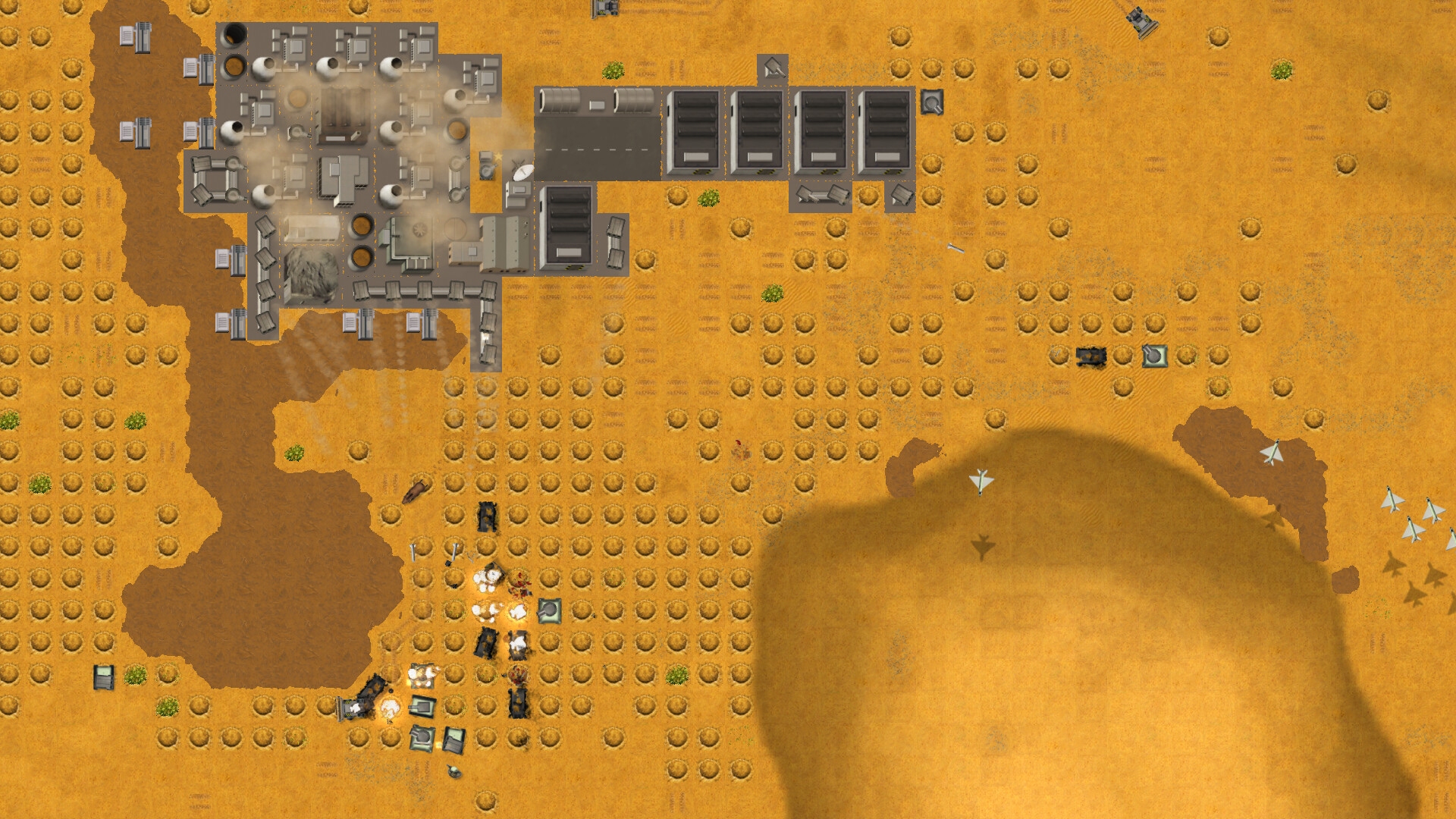
The idea of waging war over extra-terrestrial hop plants makes perfect sense if you’re Czech. Shrot (ETA June 20, but demo available now) nicks its beery casus belli from the same Nineties Dune clone it takes its aesthetic, unit selection, and core play mechanics from. Having briefly sampled the trial, I’m not totally convinced Paranoia deserved a remake, but exposure to more unit and structure types (the demo keeps things very simple at the start) may alter that take.
I is for Instruments of Destruction
Hmm. I was rather hoping the physics underpinning Instruments of Destruction would be sufficiently sophisticated to prevent situations like this one arising. To be fair, I’ve spent an hour trashing architecture thus far, and only encountered two or three impossibly strong walls, but still.
J is for Jam-packed jalopies
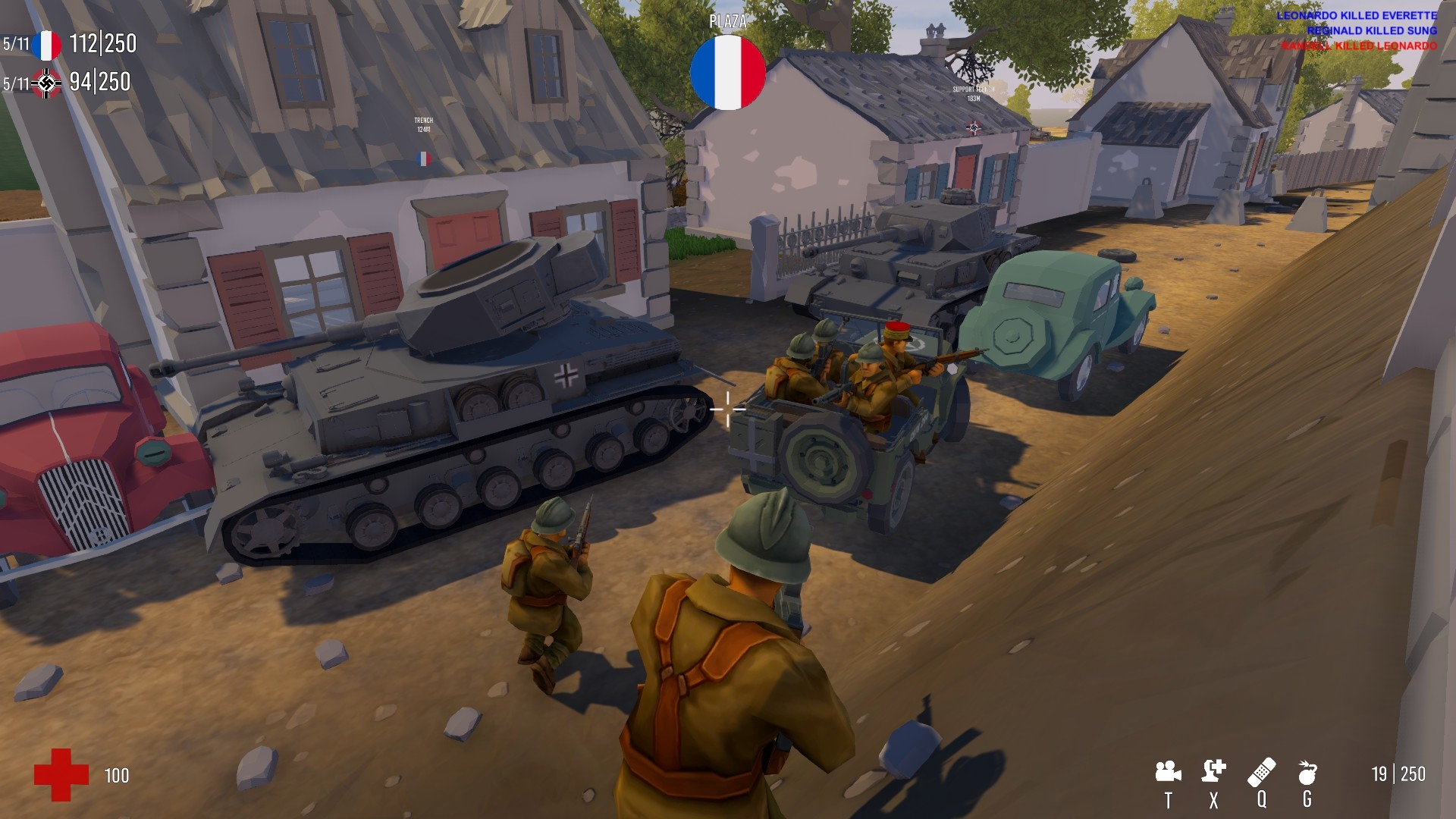
Finding dissatisfied Brass Brigaders aint easy. Since launching his multiplayer-style-but-actually-singleplayer-only WW2 FPS in 2019, conscientious creator Henry Kucab has been enhancing and expanding it with extraordinary vigour. In return for a very modest investment (£7) players now get 22 lovingly crafted maps each large enough to absorb 64 bots (the game’s maximum) with ease. They get a huge arsenal of weaponry ranging from pistols to flamethrowers, and AT guns to katanas. And they get surprisingly realistic marksmanship. Although BB doesn’t let you lean or aim with iron sights, a recoil overhaul in October collaborates with solid bot AI to make gunplay agreeably challenging. The latest update introduced Jeeps and Kubelwagens.
K is for Kafkaesque

It’s a while since I read The Trial, but I don’t recall thinking “Somebody really ought to turn this into a game!” while doggedly traipsing through it. Translating Kafka’s oppressive, disorientating, and slow-moving narratives into diversions that don’t depress or weary is a tall order as Denis Galanin discovered in 2017. We’ll find out next week whether Czech history handlers, Charles Games, have managed the near-impossible.
L is for Lead and raze
The eleven devlog’s published so far suggest Sherman Commander may have what it takes to win-over angry house enthusiasts accustomed to Panzer Elite SE and Steel Fury. There will be times in SC when the player will have control of up to four wingman tanks and fifteen infantry teams! Highly destructible recreations of places such as Aachen should ensure urban fighting is uncommonly resonant.
M is for Manchurian candidate
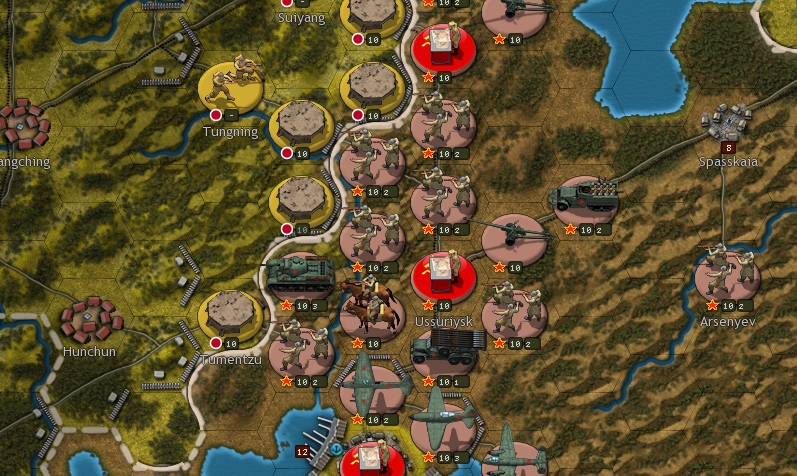
Two of the five mini-campaigns in Strategic Command WWII: War in the Pacific (ETA Q2 2024) will take place far from balmy/palmy archipelagos. In addition to scenario-ing the 1939 Khalkhin Gol scraps, Fury Software is basing a campaign on the 1945 Soviet invasion of Manchuria. As this was a decidedly one-sided affair, creative use of time limits may be required in order to guarantee challenge for Red Army players.
N is for Nautical necessity?
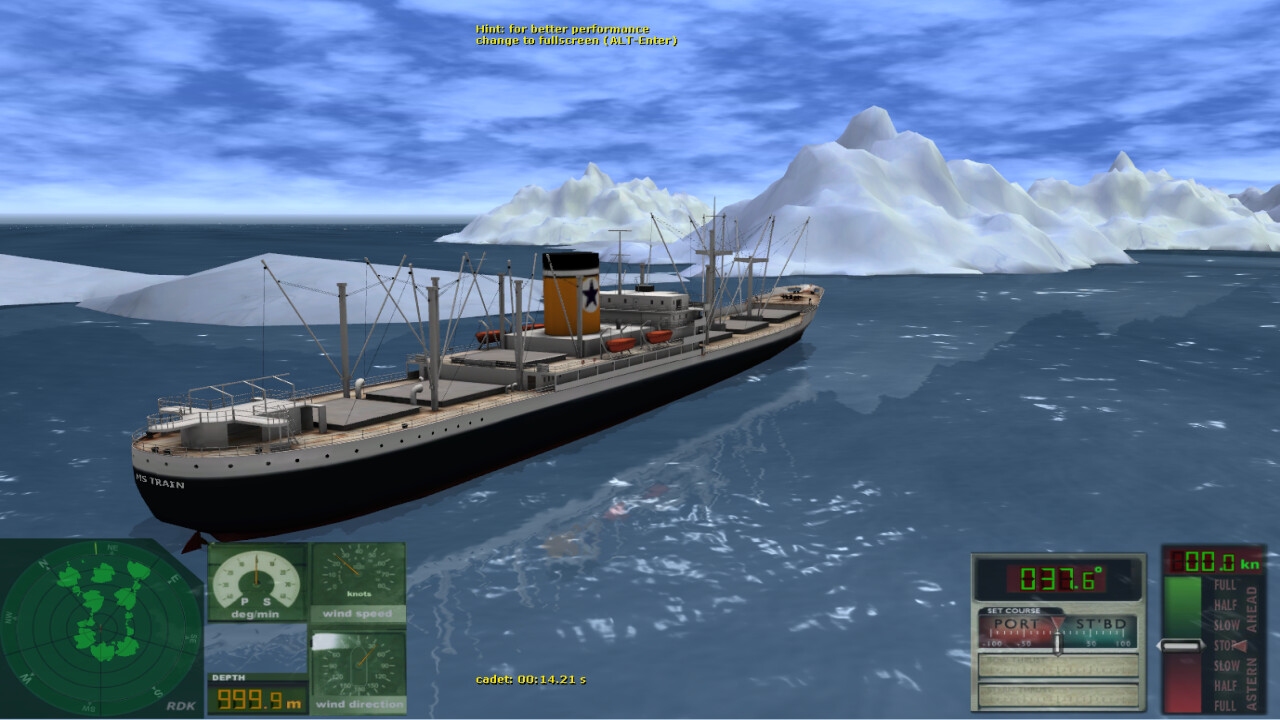
The newest incarnation of shipping magnate sim Ports of Call is almost forty years younger than the oldest one. Incorporating maneuvering challenges, 3D harbours, conflict zones, and a semaphore trainer, the £13 Ports of Call Deluxe 3D 2024 is set to mature in coming months as veteran developer Rolf-Dieter Klein implements user suggestions.
O is for Oakum saves lives
Leaving port with insufficient ballast or provisions could prove fatal in upcoming sailing sim Following Seas. Developer Brendan Parlee’s admirable commitment to age of sail realism (a commitment that brings to mind Neil Thapen’s A Painted Ocean) includes modelling spontaneous hull leaks and their remedies.
P is for Poor show, Chronospace
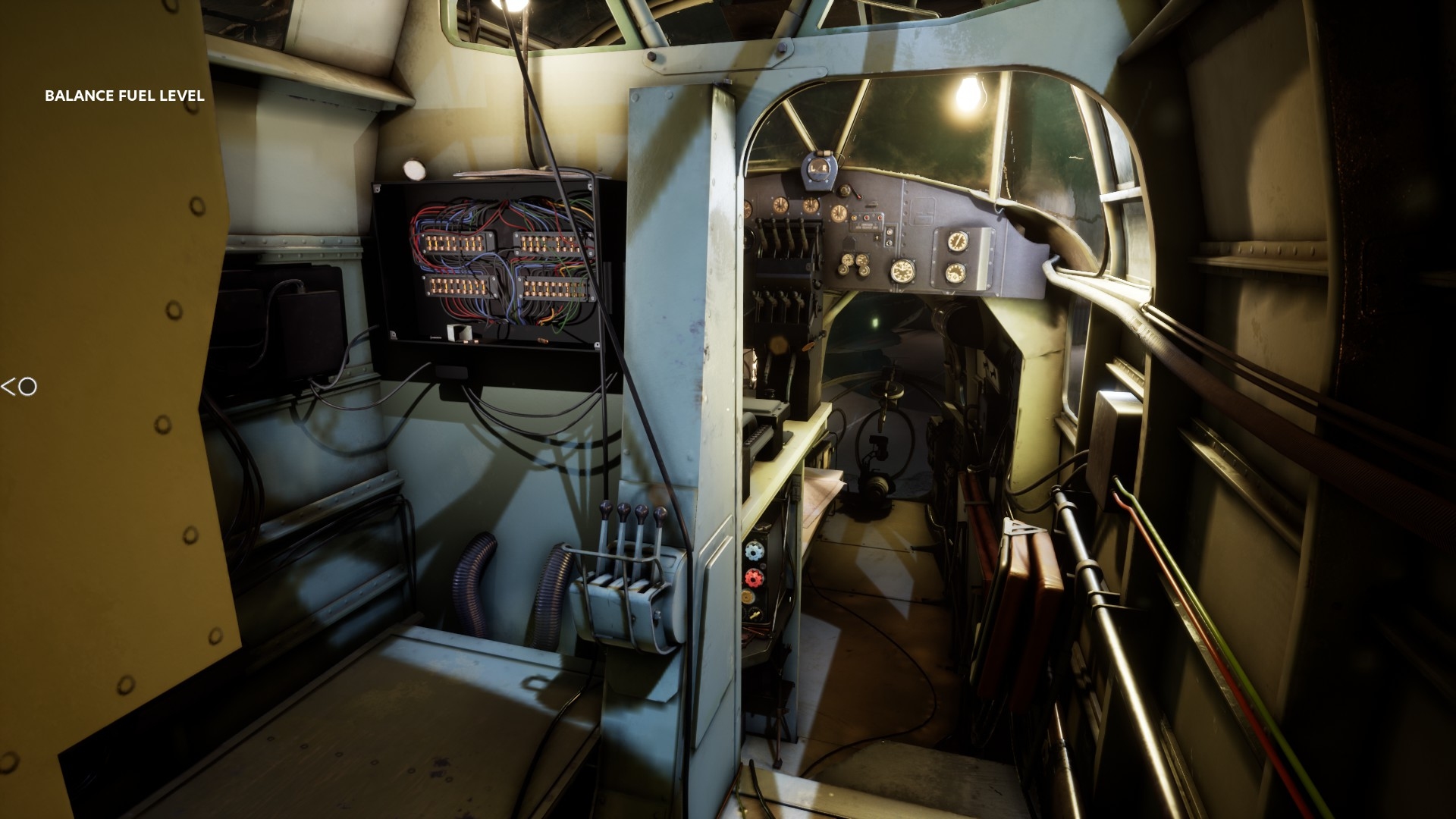
Chronospace has clearly put an immense amount of effort into Aviators, their free EU- and state-funded docu-game about Polish Halifax crews. What a pity that effort stopped abruptly on release day. Like others, I can’t get past the bugged (?) rhythm mini-game in the hangar, and have been waiting patiently for a patch since January.
Q is for Quick trade card
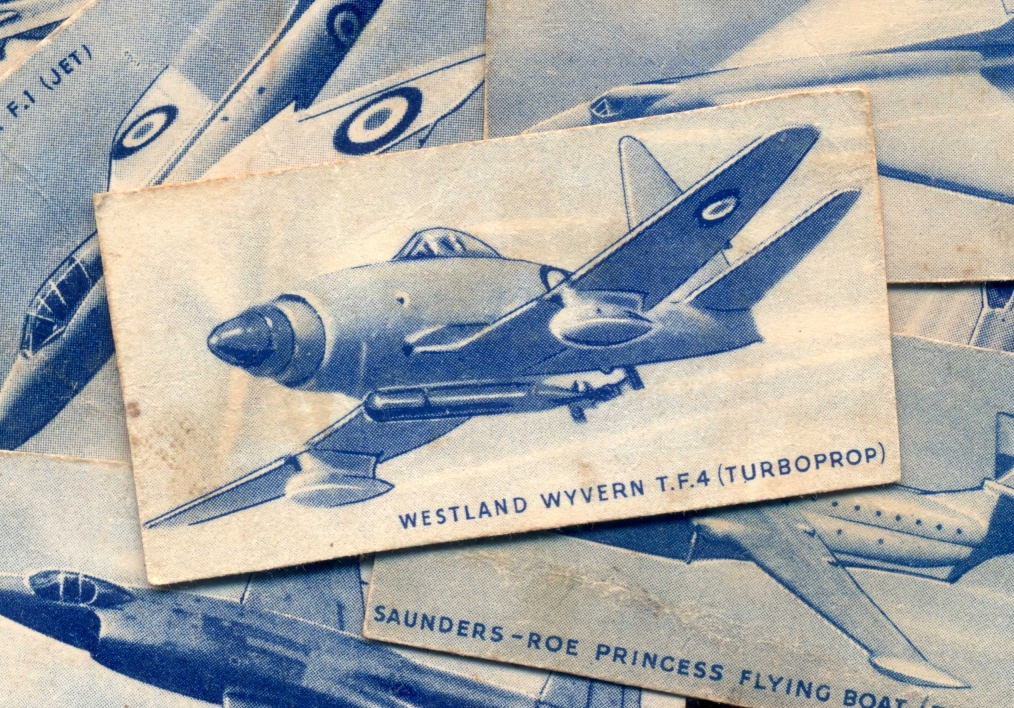
This Westland Wyvern card is from one of the more mysterious sets in my collection. Judging by the unusual selection of British aircraft depicted, the cards’ hand-cut edges and blank backs, the set was issued circa 1955, and may have required cartophilists to wield scissors. Several of the cards feature aerodynes that never made it into production such as the SARO Princess, the Supermarine 508, and Short Sperrin. Amusingly, the reverse of my Sperrin sports the penciled remnants of a chip shop order: “PLAICE, ROCK, HADDOCK… 6D CHIPS”. Talking of fish, contra-rotating props, tail winglets, and a turboprop engine mounted behind the cockpit, made the Wyvern a decidedly odd piscine. In 1954, Fleet Air Arm pilot Lt. B. D. Macfarlane, made history in one when he successfully ejected while underwater. A couple of years later, Wyverns flew 79 sorties during Operation Musketeer. Damaged by Egyptian AAA, two failed to make it back to HMS Eagle.
R is for Respect General Winter
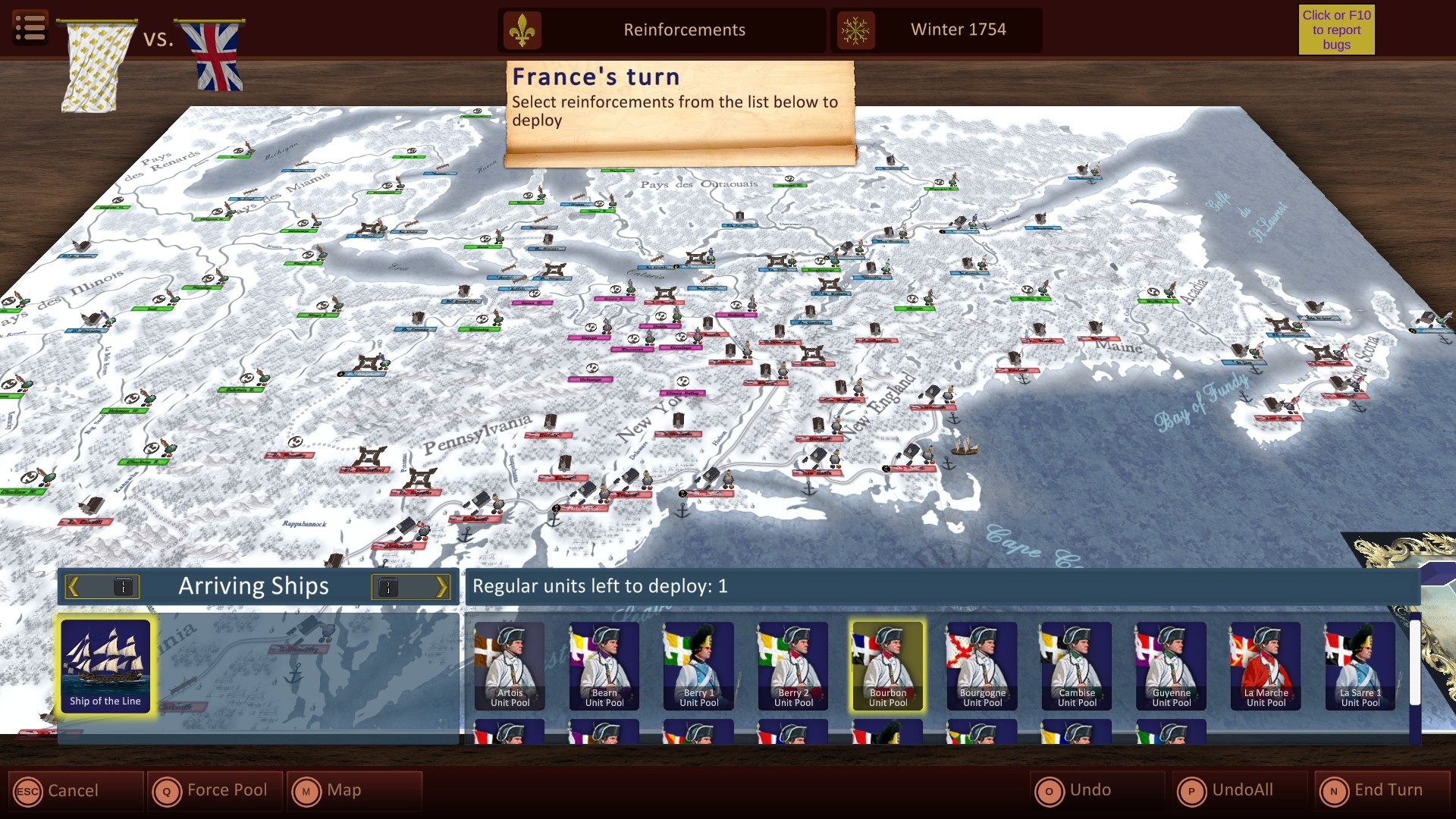
Philippe Thibaut’s latest project is a PC port of 1983 board game, Mohawk. As you’ll discover if you try its three-turn (one turn = three months) Anglo-French demo, Small Wars: Mohicans moccasins similar territory to Ageod’s Birth of America, and boasts a not unattractive 3D map.
S is for Slide Sleuth
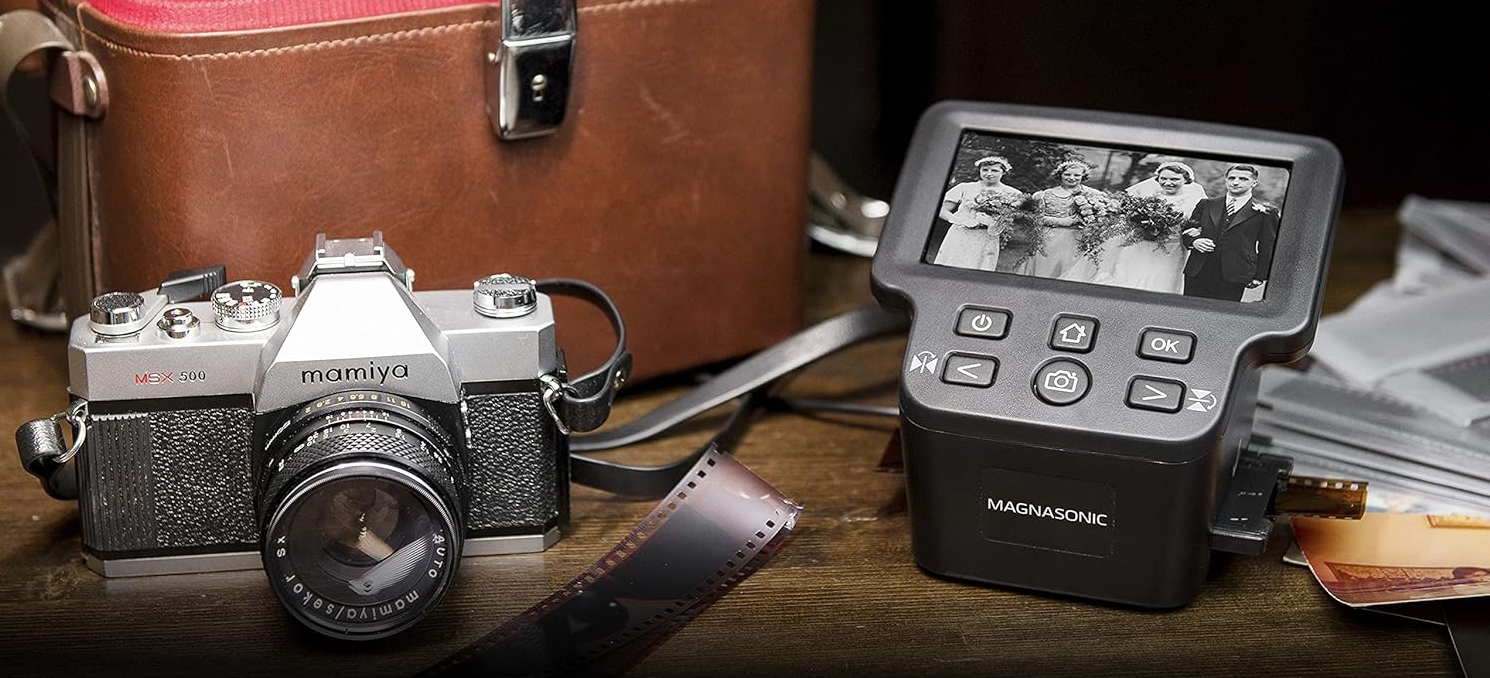
This week, while digitizing a box of ancient family slides, I had one of those “This would make a great starting point for a game!” moments. In ‘Slide Sleuth’ (working title) the player is asked to solve a mystery or cold case using nothing but a jumbled box of unlabelled and, in some cases, heavily degraded photographic transparencies. Arranging the slides in chronological order would be half the challenge (the mounts, and clues within the images, would aid this process). Manipulating colour balance, brightness, and contrast sliders so that previously undetectable visual details emerged from the murk, would also figure heavily. Aha! Slide #12 must have been taken circa 1962 because that’s the stump of the under-construction GPO Tower in the background. And X was telling porkies when he said, in his witness statement, that he’d never met Y, as the two of them can be seen deep in conversation in slide #49!
T is for Truthful Tomahawks
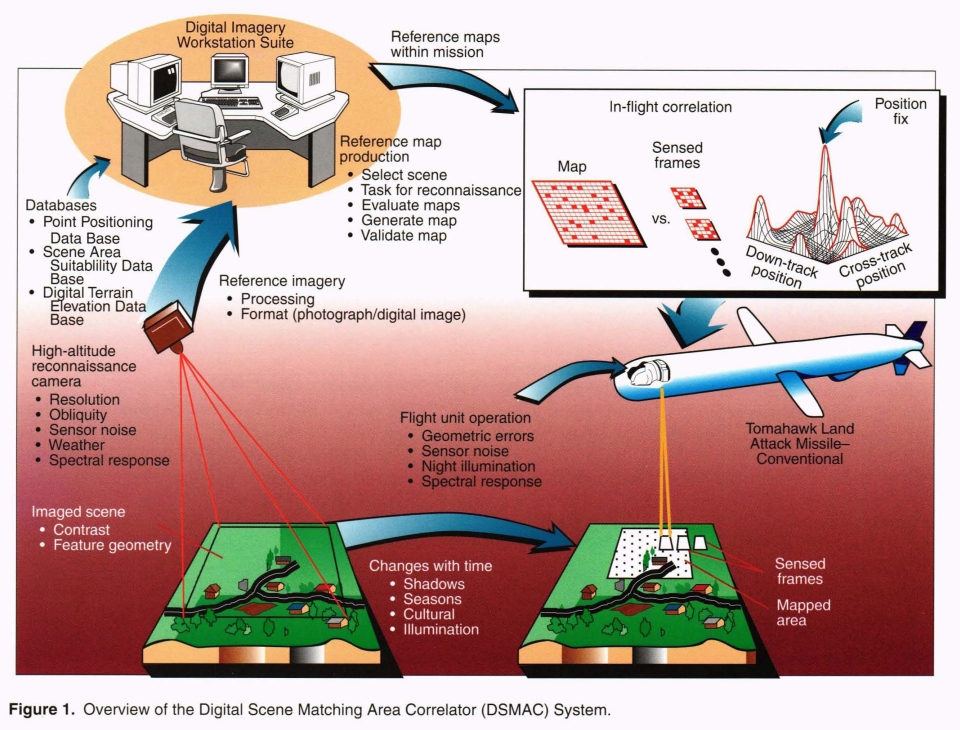
Did you know that cruise missiles aren’t wholly reliant on INS and GPS for navigation? True to their prototype, the Tomahawks in Modern Naval Warfare will have the ability to figure out precisely where they are by comparing radar altimeter readings with a stored contour map (TERCOM), and by comparing downward views with stored satellite imagery (DSMAC). Surprisingly, fairly detailed information on how the Tomahawk’s Digital Scene-Matching Area Correlation system works is in the public domain.
U is for Ultimate General: American Revolution is almost on Steam
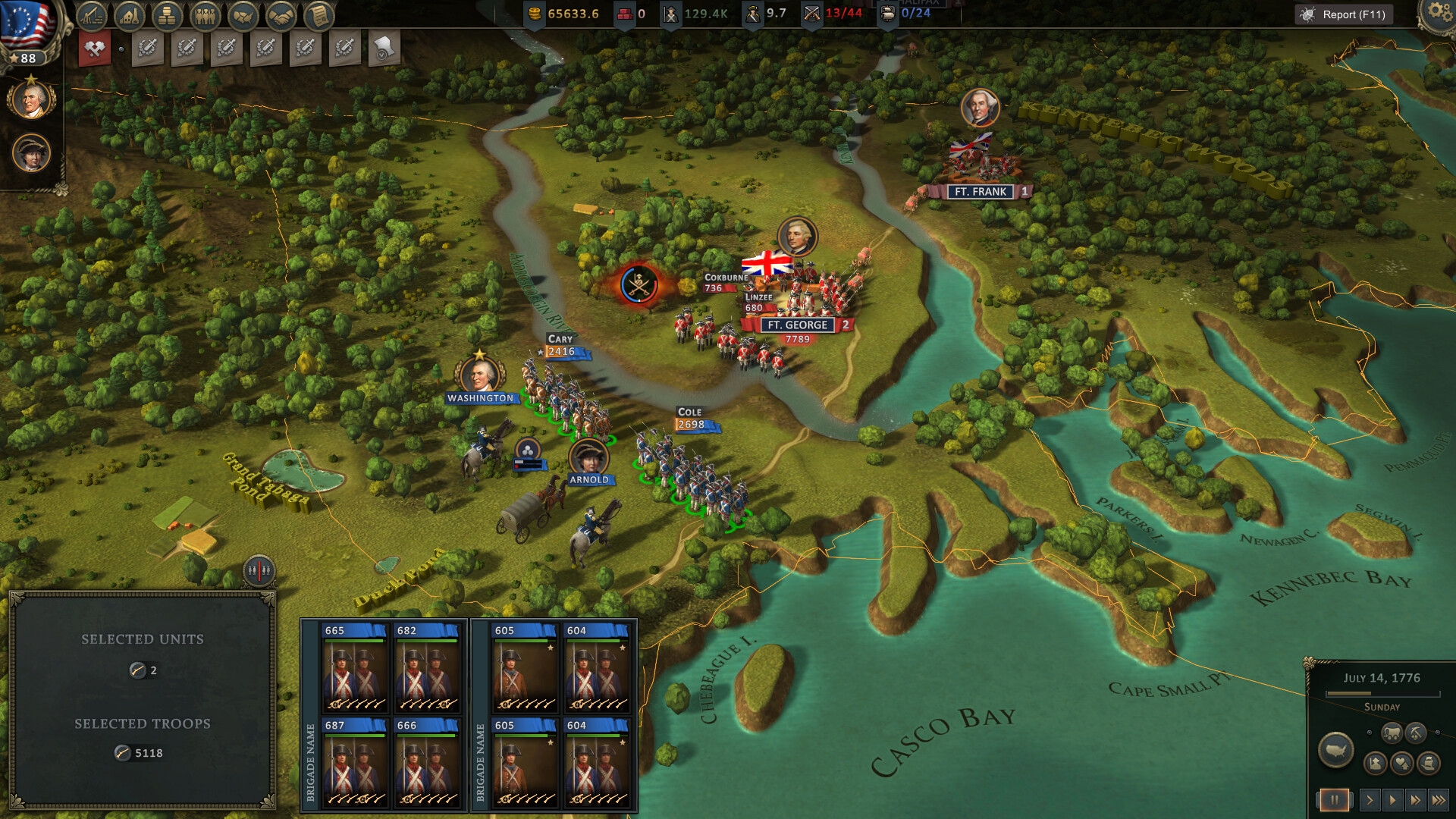
The days when I could blag ‘review code’ from Game Labs appear to be over, but that doesn’t mean I’ll blank Early Access Ultimate General: American Revolution when it hits Steam next month. Although UGAR clearly hasn’t wowed all early adopters (If you can’t wait for the Steam release, you can buy it direct from source now) buyers willing to grapple with its complexity and tolerate its teething troubles seem fairly content.
V is for Vietnam War MOUT
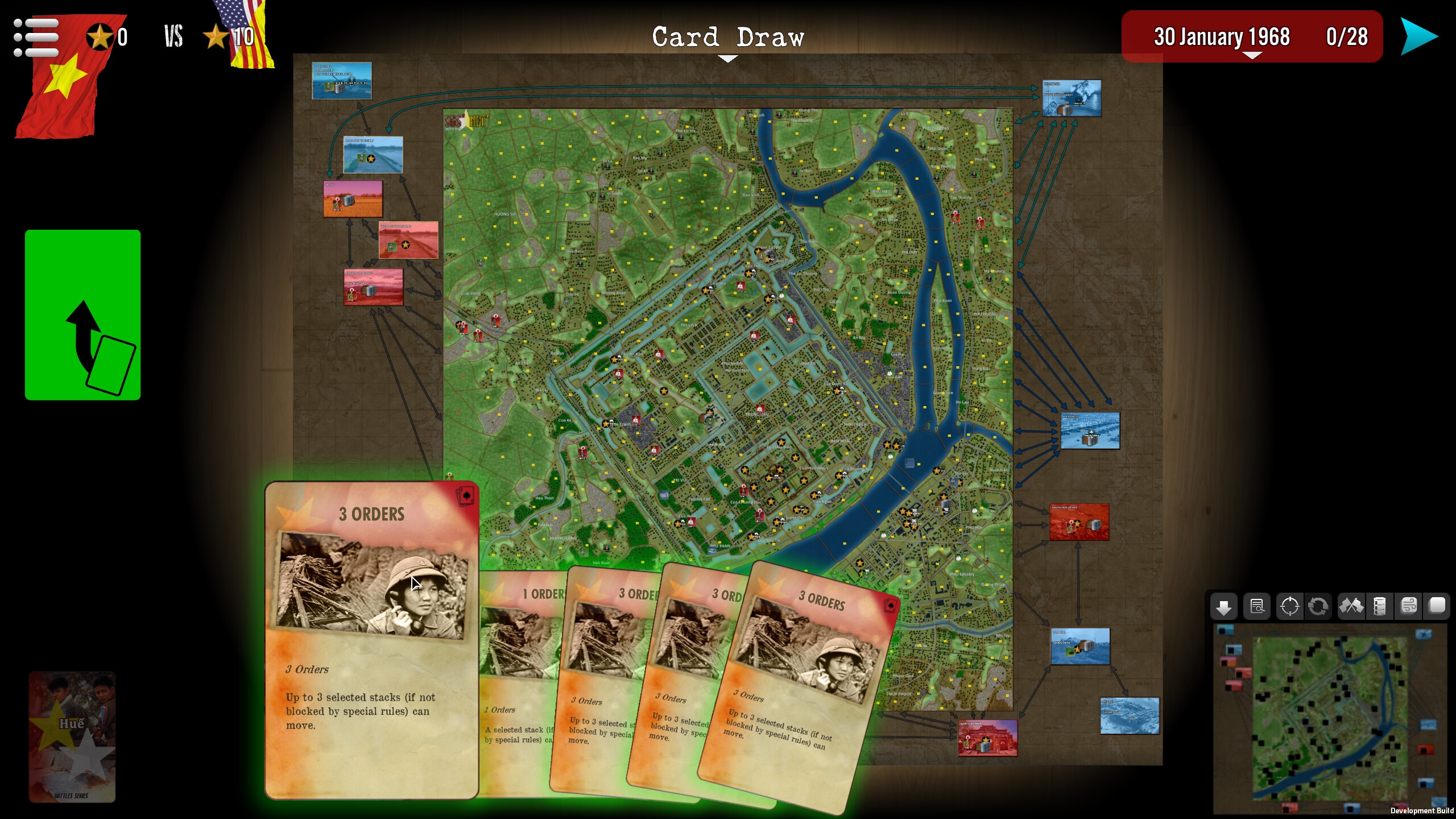
In addition to featuring Strategy Game Studio’s best bit of cartography to date, SGS Battle For: Hue includes wargaming novelties such as tear gas, civilians, LCUs, and bridge saboteurs. Although the game’s high unit count is partially offset by card-based order rationing, novices keen to try the Wars Across The World-reminiscent SGS Battle For: series are probably better off starting with Hue’s simpler siblings, Stalingrad and Madrid.
W is for Wordy warfare
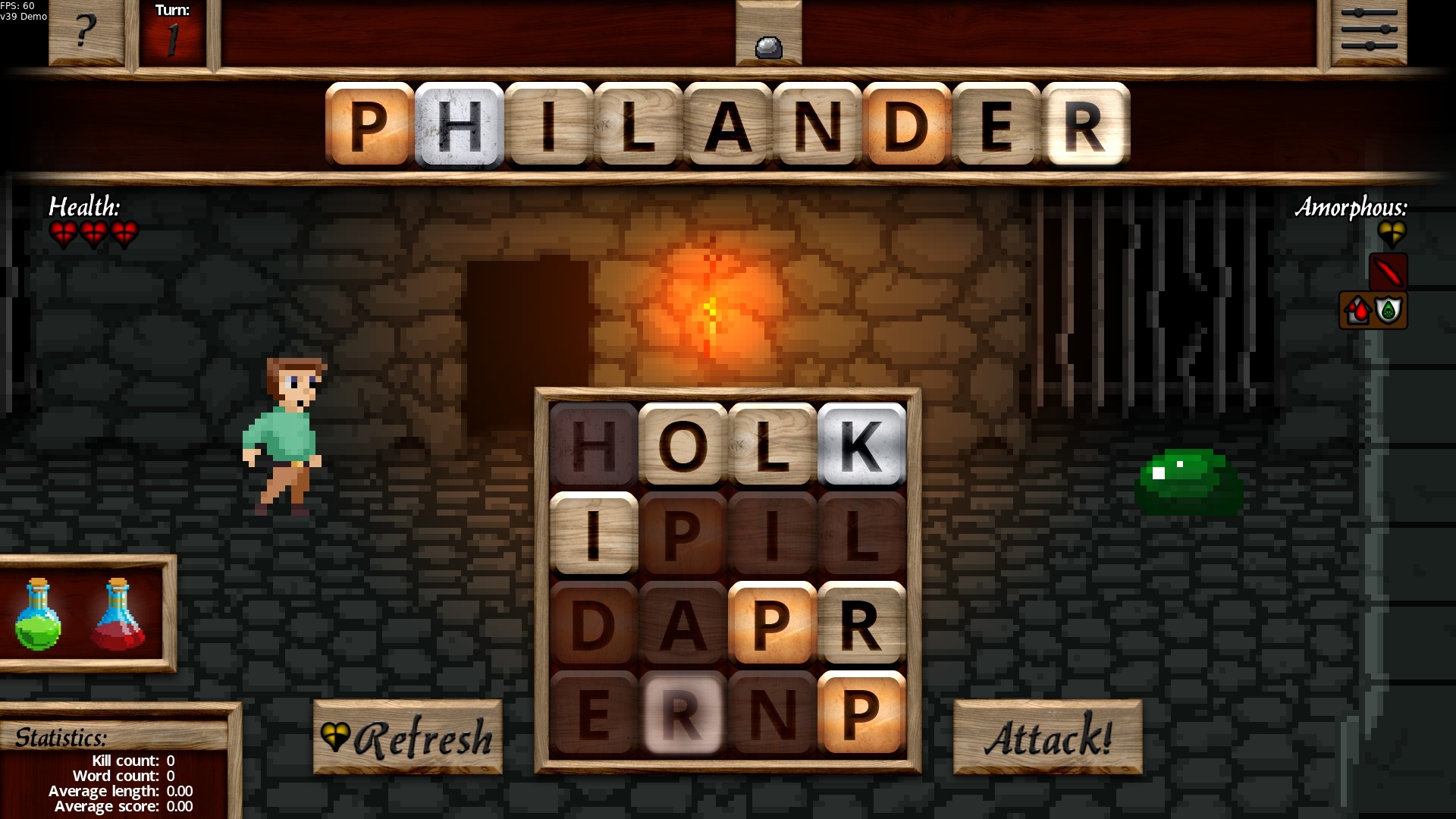
Reader Colonel_K drew my attention to the demo-endowed Sternly Worded Adventures, and if his pithy description – “The connective tissue is pixel art and roguelike adventure… Combat is turn-based against a series of solitary foes, damage dealt from the word you create in a ‘Boggle’/’Scrabble’ cross. Overkill replenishes your own health. Dungeons take me 20-30 minutes… Out of combat you manage your consumables and equipment for the boons they provide.” – and this screenshot, rings bells that’s probably because you’ve Bookworm Adventured in the past.
X is for Xhausting job = fewer xcellent machinima
Classy Soto Cinematics vids like this one will arrive less frequently from now on. As the sim-loving historian behind one of my favourite YouTube channels explains here, a new teaching job means less spare time for crafting short-but-labour-intensive aviation documentaries.
Y is for Yugoslavian memories
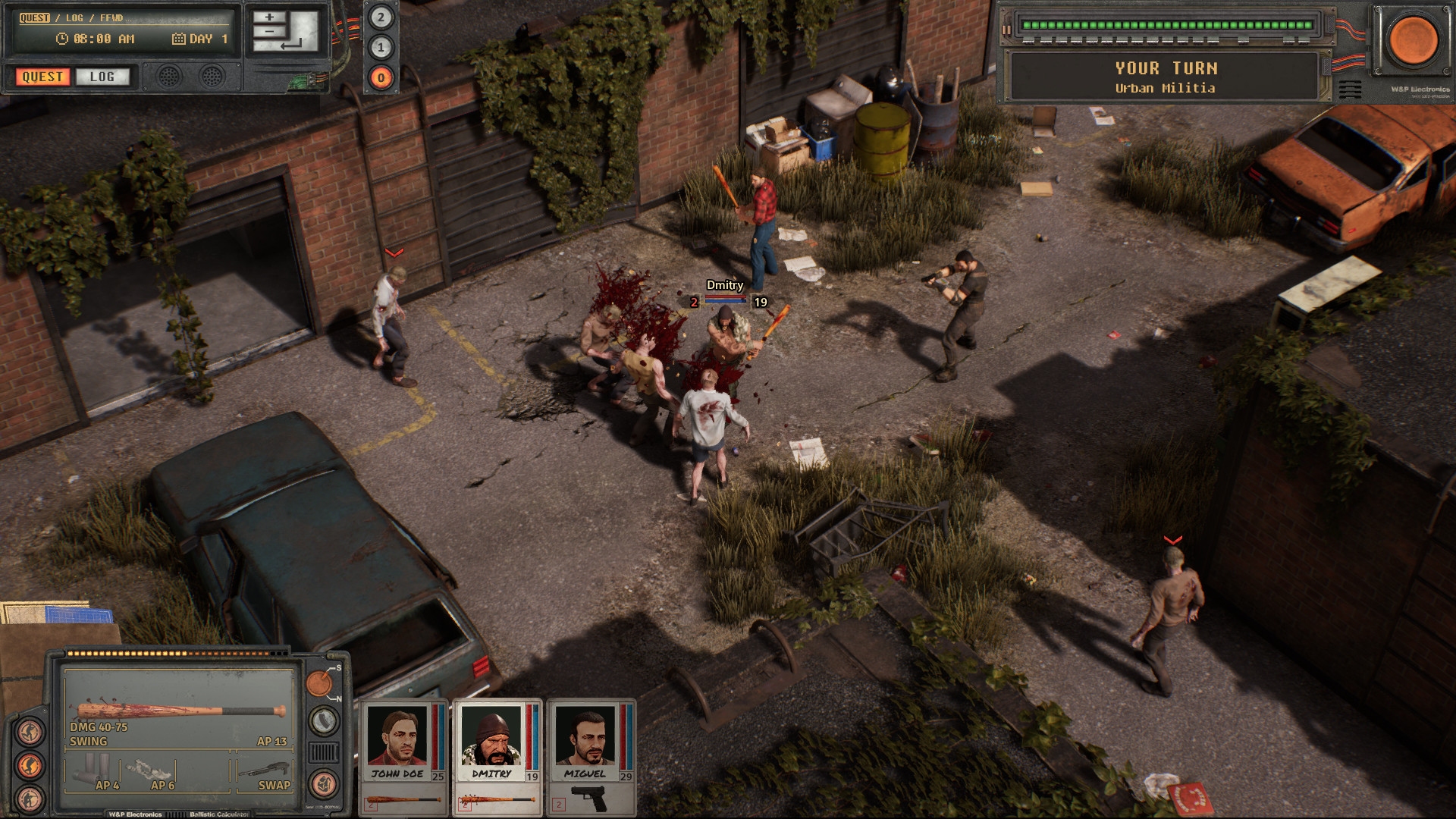
Possibly because of what happened to Roman and myself on the island of Krk in 1989, I’ve little appetite for zombie games today. Urban Strife, a post-apocalyptic Jagged Alliance-style TBT packed with shambling brain bolters, will need to be seriously strong to overcome my natural aversion to the theme. Recently revealed information about the game’s ballistics and AI suggests the requisite strength may well be present.
Z is for Zero textures
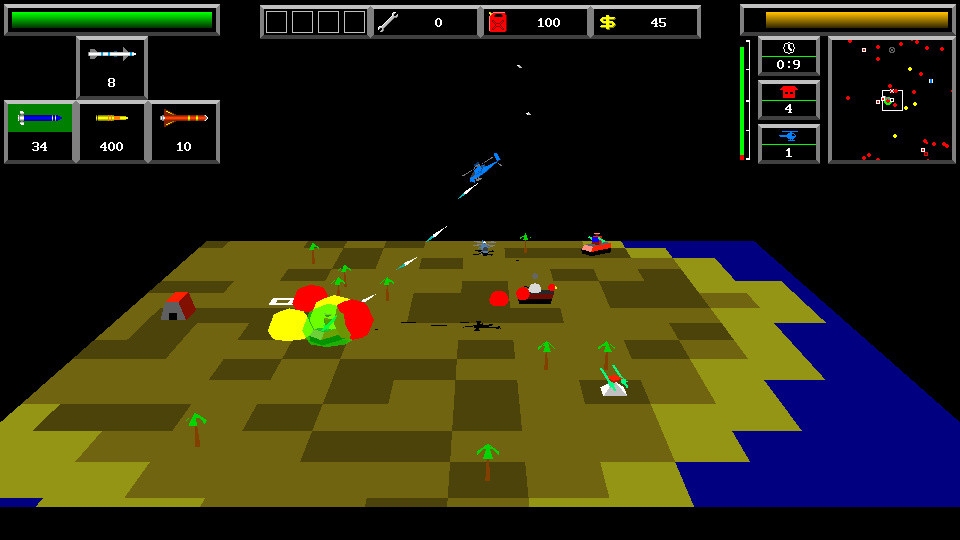
Hijong Park’s dirt-cheap chopper-shooter (chooter?) Hornet Virus: Alcimus II doesn’t have Cleared Hot’s fancy physics and long view ranges, but it’s fun, stylish, and, unlike CH, playable right now.

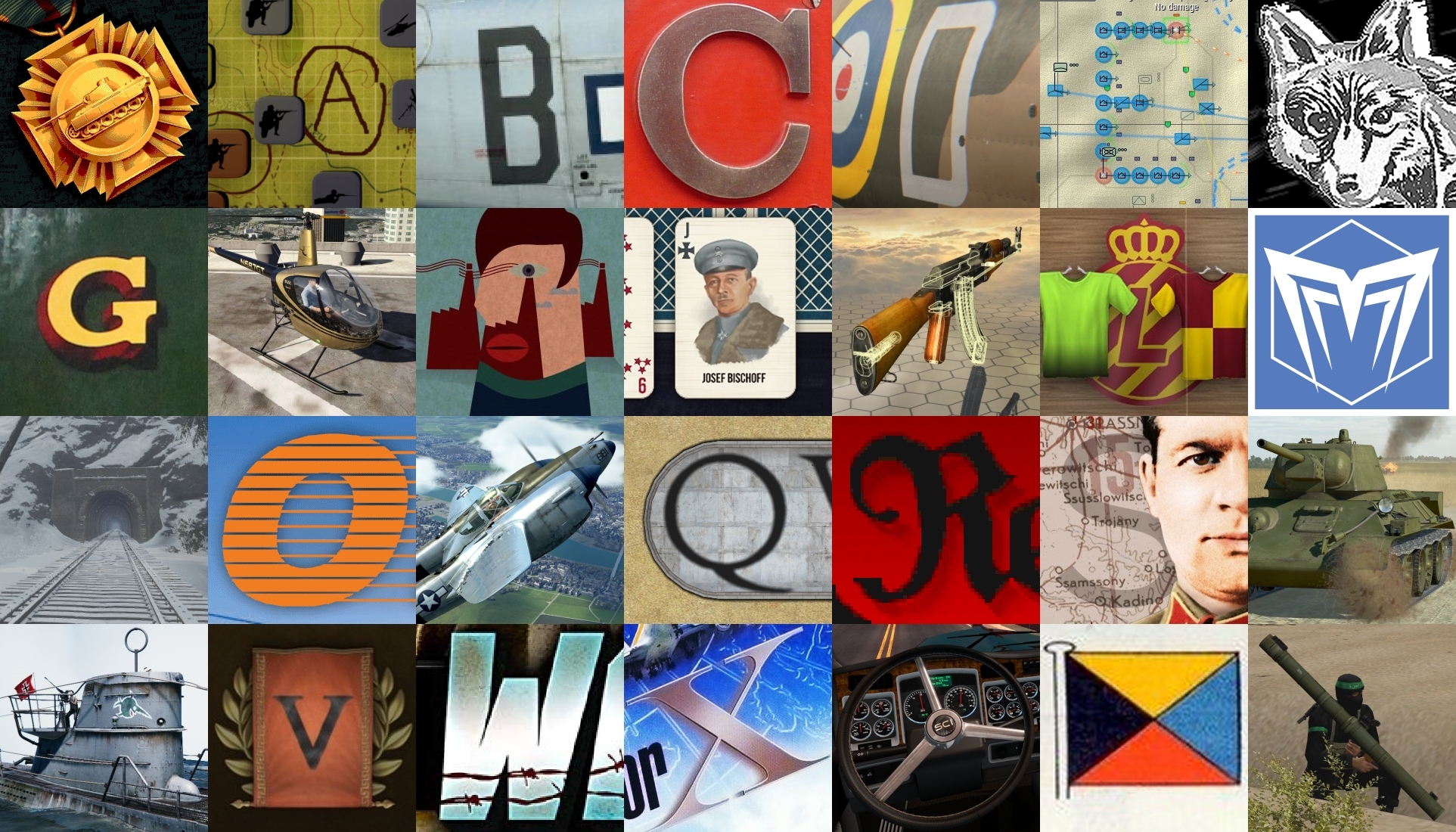
As usual, a great collection of classic, new, and some previously unknown by me.
I usually try to avoid early access titles until full release, but now I have an irrational desire to get Global Farmer when it is available. Damn you, Clarkson… and Tim!
Morale +1. Thanks.
With regard to your comment about time limits to make the Soviet invasion of Manchuria interesting, I recently took the plunge into trying to learn the beast that is Gary Grigsby’s War in the East. I have been extremely impressed by how carefully crafted the victory conditions are so that, for example, I can absolutely steamroll the Soviets as the Axis at the outset of Barbarossa, but still lose the scenario by a significant amount im VPs becuase my performance was short of historical on both territory gained and losses taken/inflicted. So when done thoughfully, even quite lopsided conflicts can still be very interesting to play and also shed light on the real-world decisions taken by each side.
Whether used for victory/defeat determination or simply provided as a post-battle bonus the “This is how your performance compared with Faction X’s or General Y’s” concept is criminally under-employed in wargames. Take the idea even further and you end up in seriously unfamiliar territory. I occasionally picture a role-playing wargame where you get rewarded for ‘in character’ decision-making. For once the player isn’t trying to win at all costs, they are attempting to get under the skin of a particular historical leader/commander.
Decesive Campaigns: Barbarossa game close. Granted there still was an optimal strategy and decisions to make, but you could roleplay as the commander. Also Shadow Empires are good for roleplaying as is Grand Tactician: Civil War. And of course Paradox Grand Strategy games are excelent at this, but they are not wargames per se.
But yeah, I wonder too why there aren’t more rpg/wargames hybrids, maybe because players like to win:)
Twilight 2k is probably the most wargame-like of the current RPGs out there and it’s really about surviving the aftermath of a terrible war. Trying to win is the most in-character thing a player can do.
Stay Frosty and 3:16 Carnage Amongst the Stars are pretty much the indie rpg precursors to Helldivers 2 so the gravitas of making the difficult decision to send your men to their death for the mission is probably lost in a hazy of Starship Troopers-esque satire and laughter; at least the times I played those two games.
Twilight 2k is the only one that my friends took seriously at face value.
Love me some BRASS BRIGADE. It’s actually fairly challenging. My favorite battle was when I dispatched 279 enemy soldiers while not having to respawn once. It’s amazing how much damage you can do when you sneak around to the German tank park and steal a Tiger. LOL. Can’t wait for UGAR on Steam.
A2Z are always a treat because Tim always uncovers games I would never have come across myself. SGS Battle for Hue is going to lead to a rabbithole to learn more about the battle, I know it!